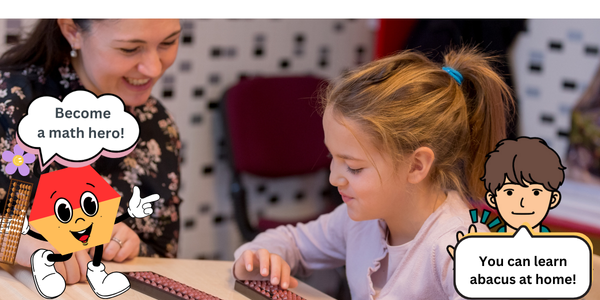There are three ways to learn abacus: enrolling in a local abacus school, taking online classes, or learning at home. In this article, we will focus on learning abacus at home.
If you want your child to learn abacus but don’t have a nearby school, are unsure about which online class to choose, or need a flexible schedule due to other activities, home learning might be the perfect solution.
The basics of abacus are straightforward and easy to understand, with plenty of helpful tutorial videos, textbooks, and websites available to get you started. As an experienced abacus learner who’s learned abacus and created my own self-learning website and tutorial videos, I’m confident it can be mastered at home. Here are three essential factors that contribute to successful abacus learning at home.
Have a Clear Purpose for Learning Abacus:
Why do you want your child to learn abacus? Is it to help them become comfortable with basic calculations and boost their confidence in math, or are you aiming for them to advance and excel in mental math skills? Your goal will shape your approach to learning at home.
For example, if you’re aiming for higher proficiency, choose Japanese abacus textbooks that thoroughly break down each level with ample practice problems designed for exam success. Japanese abacus textbooks typically provide sufficient drills to master essential skills at each level. Having a mentor or tutor available for feedback is wise. Additionally, consider having your child take certification exams after completing each textbook level to ensure mastery before progressing.
On the other hand, if your goal is for your child to ease into math and build confidence, choose kid-friendly textbooks that are less time-consuming and demanding in terms of patience. While these resources will improve their calculation skills, it’s important to note that speed and advanced mental math abilities come with dedicated practice over time.
Choose the Abacus Learning Style:
Decide whether to use the Japanese style abacus (with 1 upper bead and 4 lower beads) or another method. There are abundant resources available for learning abacus independently, such as textbooks, tutorial websites, videos, and mentors. It’s important to note that different instructors or textbook may teach using varying methods.
For example, they may have different rules for finger movements or approaches to multiplication—some may teach to place both multiplier and multiplicand beads, while others may teach to place only multiplicand beads or none at all. With numerous methods available, ensure you select the right one to help achieve your goal and match your child’s learning style.Once you start learning, stick to one approach to avoid confusion and promote effective learning. If you feel uncertain, choose the Japanese abacus and its instruction. While there may be minor differences, most textbooks and instructions provide clear guidance and plenty of practice problems. This approach will surely help learners improve their skills.
Parental Support is Crucial:
Especially for young learners or those new to abacus, parental involvement is essential. Whether your child is enrolled in online classes or attending an abacus school, teachers can explain how to solve unfamiliar problems, but young learners may struggle to grasp everything after just one or two explanations. Practicing together at home with parents is key to improvement, regardless of whether your child is going to an abacus school or learning at home.
If teaching at home without attending classes or a school, parents need to take on the role of instructor. They should purchase their own abacus, study the textbook ahead of time, and learn alongside their child to effectively teach them. Consulting a tutor or someone knowledgeable in abacus is necessary if uncertainties arise.
I understand it may seem daunting for some parents. However, abacus learning greatly benefits from parental help and support. Believe me, the instruction itself is not difficult, especially in the beginning. There are many how-to guides and resources available to help you along the way, including my tutorial website and videos.
In sum, learning abacus at home offers a flexible and accessible option for children without nearby schools or specific schedules. It requires clear goals: whether to build basic math confidence or develop advanced mental math skills. Choosing the right abacus method and receiving parental support are crucial factors. Parents can play a pivotal role by learning alongside their child, ensuring consistent practice and seeking guidance when needed. With the abundance of online resources available, home learning can be both effective and rewarding for young learners.




